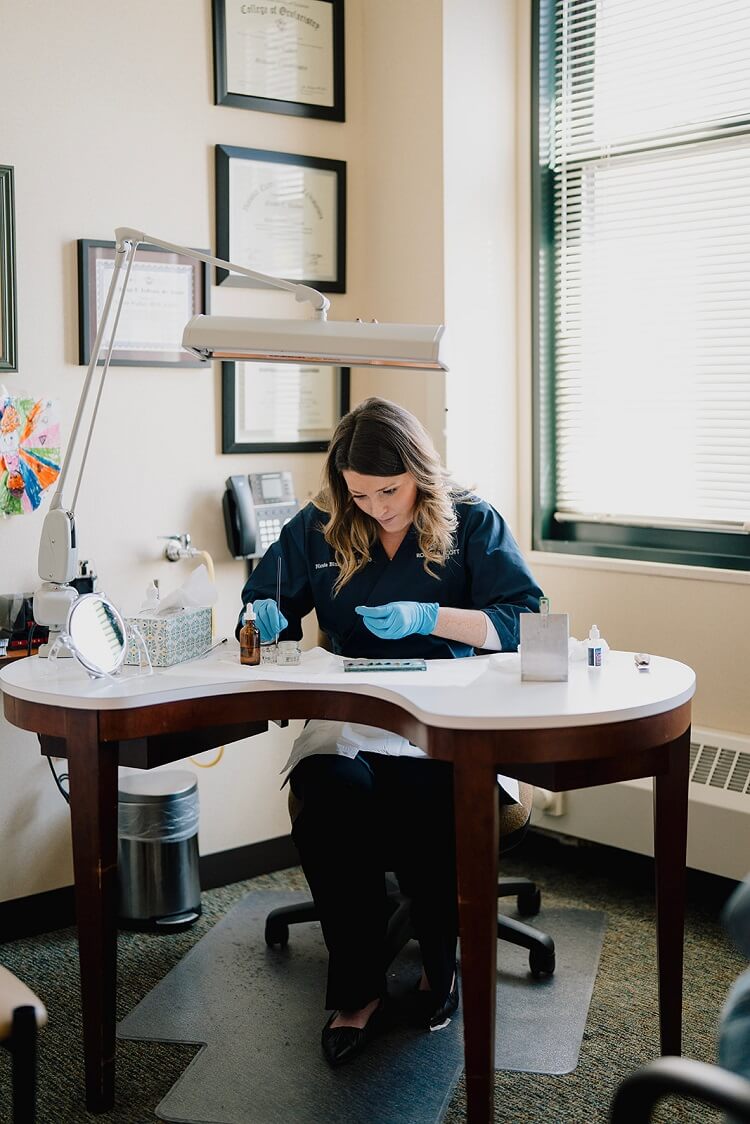
An ocular prosthesis is a custom-made device designed to restore the natural appearance of an eye that has been removed or has lost function. Our prostheses are created to blend seamlessly with your unique look and to fit comfortably.
Both a prosthetic eye and a scleral shell are designed to improve appearance and provide support, but they are used in different situations. Here’s a breakdown to help you understand which option may be right for you:
Prosthetic Eye
- What It Is: A prosthetic eye is a custom-made prosthesis used when the natural eye has been removed. It fits into the eye socket to restore a natural look and provide anatomical support.
- Who Needs a Prosthetic Eye?
A prosthetic eye is typically recommended if the entire eye has been removed due to a condition or injury. This is often done through a procedure called enucleation, where the eye is removed but the eyelids and eye muscles are left intact.
Scleral Shell
- What It Is: A scleral shell is a thin prosthesis designed to cover an existing eye that has lost function. It fits over the natural eye to enhance its look without needing to remove any eye tissue.
- Who Needs a Scleral Shell?
A scleral shell is often recommended for patients with conditions where the eye is present but requires coverage. These conditions may include:- Eviscerated Eyes: When the contents of the eye are removed, but the outer white part of the eye (sclera) and eye muscles remain intact.
- Microphthalmia: An underdeveloped eye that is significantly smaller than normal.
- Phthisis Bulbi: A shrunken, non-functioning eye.
If you’re unsure which option might be best for your needs, our team will guide you during your consultation to help determine whether a prosthetic eye or scleral shell is the right choice for you.
During your initial consultation, we’ll discuss your eye history, evaluate your specific needs, and outline the process of creating your custom prosthesis. This includes discussing the materials, taking measurements, and scheduling your fitting sessions. You’ll also have an opportunity to ask any questions you may have.
Creating a high-quality, custom ocular prosthesis involves several appointments. While timelines can vary, most patients can expect to have their finished prosthesis within a few weeks, depending on individual needs and schedules.
Our prostheses are custom-designed to mimic the look and feel of a natural eye. Using advanced materials and techniques, we carefully match the color, size, and shape of your prosthesis to your remaining eye for a balanced and comfortable fit. Adjustments are made as needed to ensure comfort and an ideal match.
An ocular prosthesis, while not restoring vision, offers significant functional benefits beyond cosmetic enhancement. It provides protection and anatomical support to the eye socket, which is crucial for maintaining the health and structure of surrounding tissues. By filling the space left by an absent or non-functional eye, the prosthesis helps prevent complications such as socket contraction and supports the eyelids, facilitating more natural movement.
Your prosthesis requires periodic cleaning and maintenance. We provide detailed care instructions during your fitting, and you can always reach out with questions. Additionally, we recommend an annual check-up to ensure optimal fit and appearance over time.
Ocular prostheses typically lasts around five to seven years, but this can vary based on individual needs and care. Regular check-ups help us determine when adjustments or replacements might be needed to maintain comfort and appearance.
Yes, we work with most major insurance providers. Please bring your insurance information to your initial appointment, and we’ll assist in determining coverage options. Keep in mind that many plans cover ocular prosthetics to some degree, though coverage specifics can vary.
Please bring a valid insurance card. Depending on your insurance, you may need to provide a referral from your doctor. You will also need to sign up for OnPatient EHR, which will allow us to verify your reimbursement and streamline your intake paperwork.
We generally recommend annual or biannual (twice per year) follow-ups to ensure the prosthesis remains comfortable and in good condition. However, if you experience any discomfort or changes, don’t hesitate to schedule an appointment sooner.
Simply call our office, and our team will guide you through the initial steps and help you prepare for your first visit.
